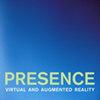对邻近虚拟物体距离的判断:观看条件与调节需求的交互作用
IF 0.7
4区 计算机科学
Q4 COMPUTER SCIENCE, CYBERNETICS
引用次数: 51
摘要
10名受试者调整一个真实物体探测器,以匹配附近虚拟物体的距离,虚拟物体通过一个透明的头盔显示器光学显示。单眼,双目和立体观看条件下使用两个级别所需的焦点。观察到的误差可能与受试者双眼会聚的变化有关。结果表明,虚拟对象可能会以提高空间保真度的方式呈现。本文章由计算机程序翻译,如有差异,请以英文原文为准。
Judgments of the Distance to Nearby Virtual Objects: Interaction of Viewing Conditions and Accommodative Demand
Ten subjects adjusted a real-object probe to match the distance of nearby virtual objects optically presented via a see-through, helmet-mounted display. Monocular, biocular, and stereoscopic viewing conditions were used with two levels of required focus. Observed errors may be related to changes in the subjects' binocular convergence. The results suggest ways in which virtual objects may be presented with improved spatial fidelity.
求助全文
通过发布文献求助,成功后即可免费获取论文全文。
去求助
来源期刊
CiteScore
2.20
自引率
0.00%
发文量
8
审稿时长
>12 weeks

 求助内容:
求助内容: 应助结果提醒方式:
应助结果提醒方式:


